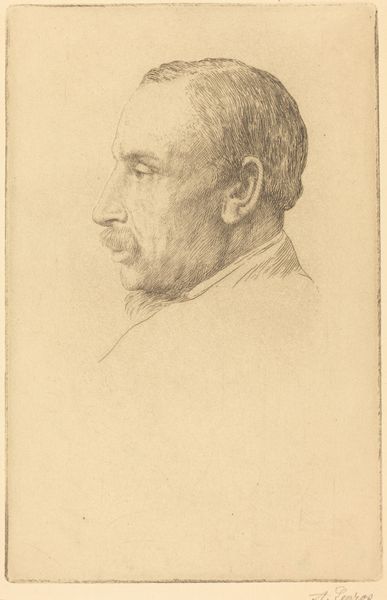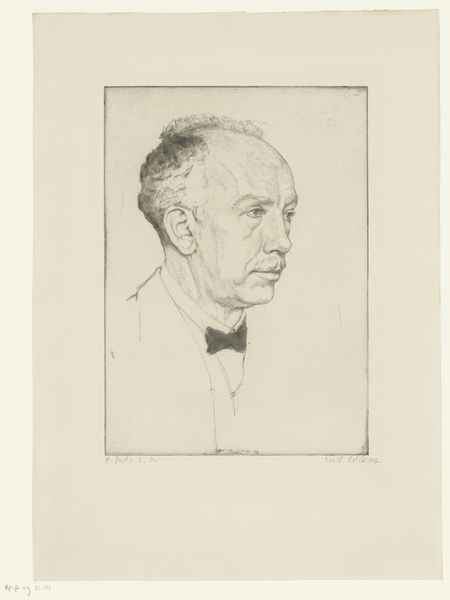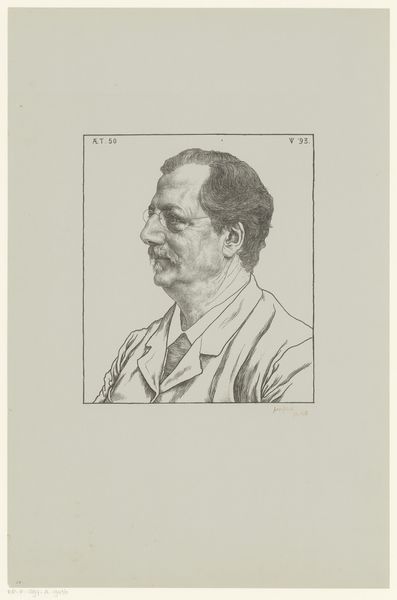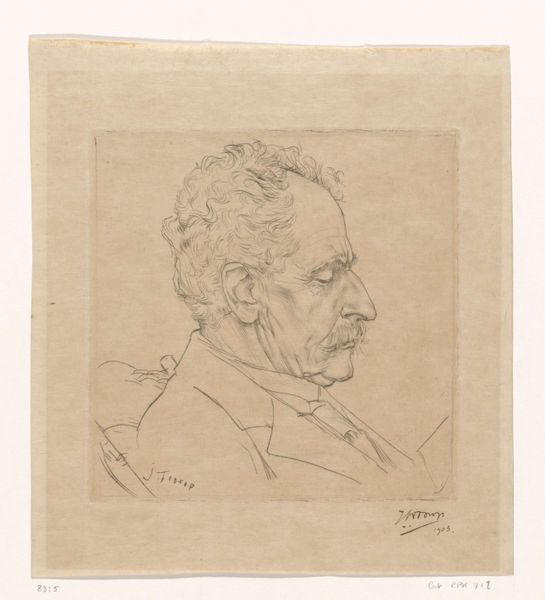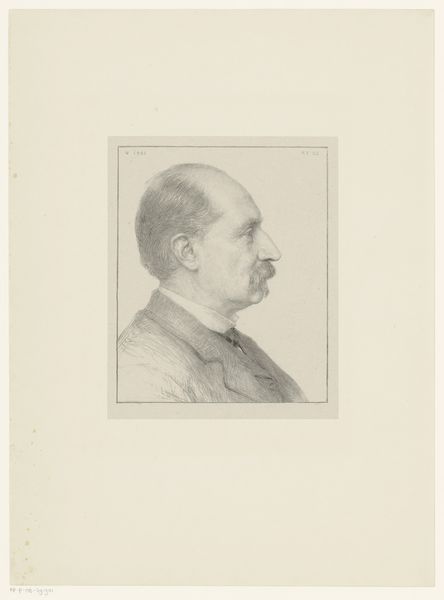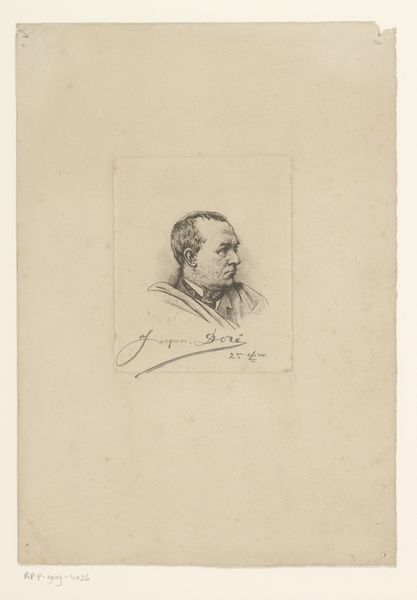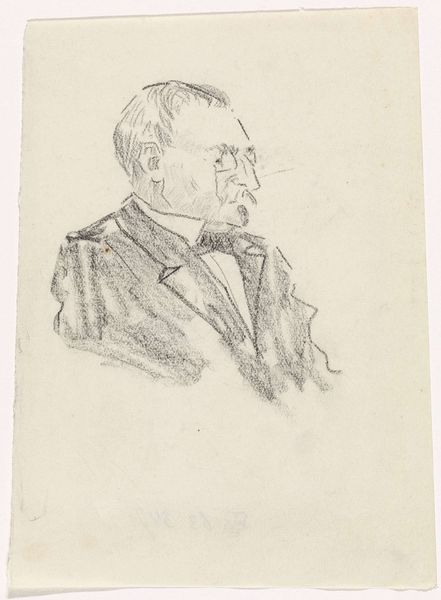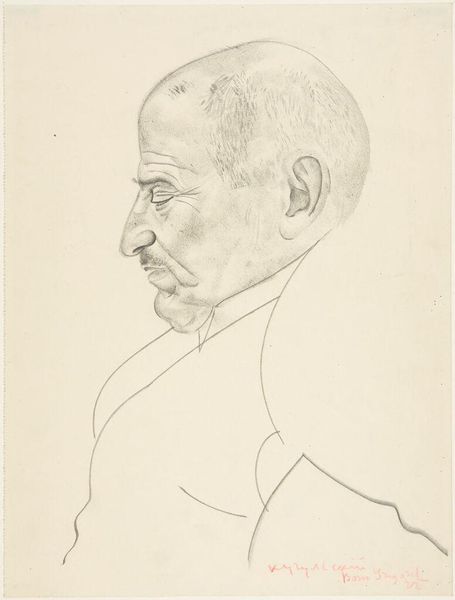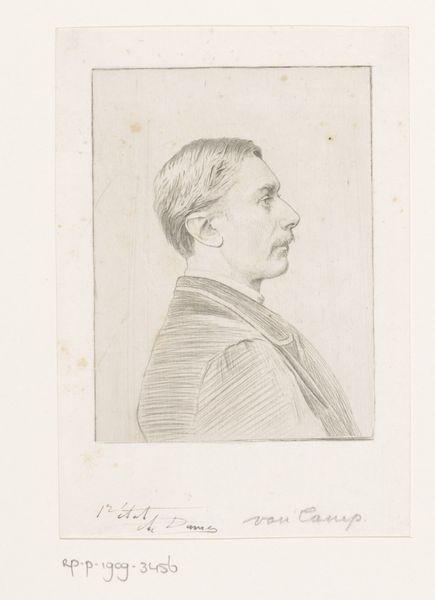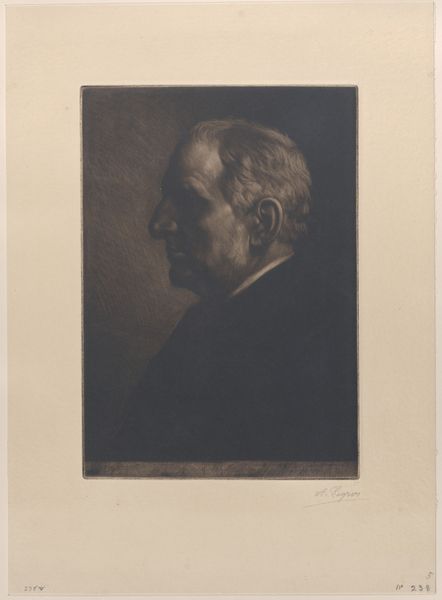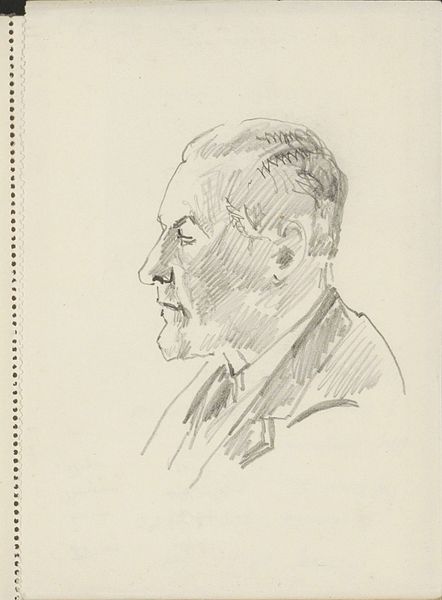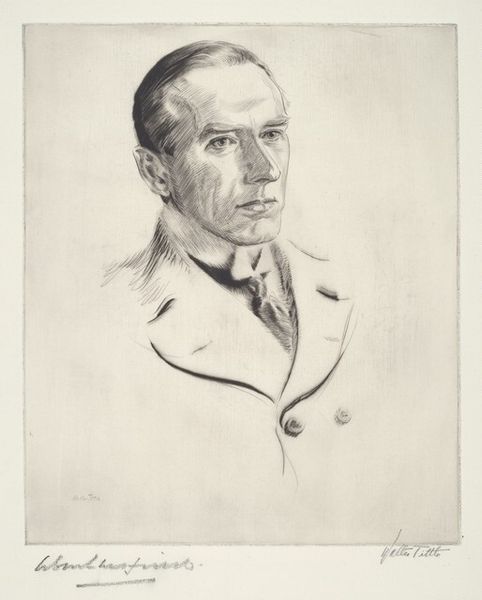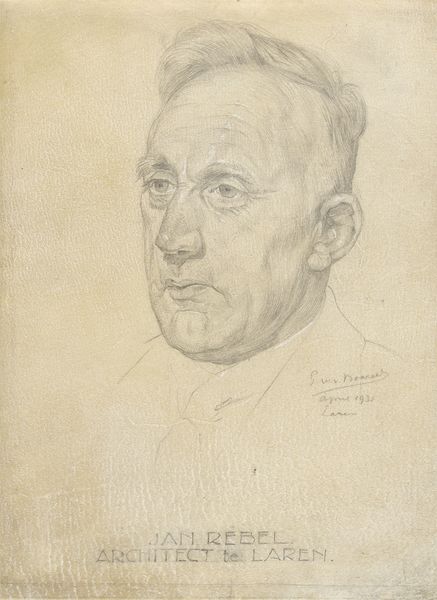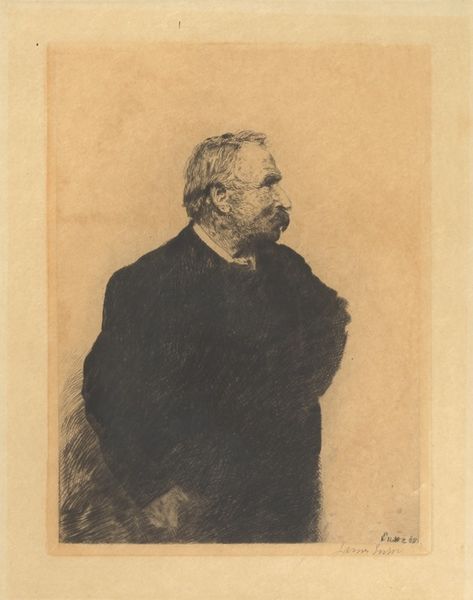
drawing, print, etching, pencil
#
portrait
#
pencil drawn
#
drawing
# print
#
etching
#
charcoal drawing
#
pencil drawing
#
pencil
#
men
#
portrait drawing
#
academic-art
#
realism
Dimensions: Plate: 9 5/16 × 6 1/8 in. (23.7 × 15.5 cm) Sheet: 10 3/4 × 7 3/8 in. (27.3 × 18.7 cm)
Copyright: Public Domain
This is a portrait of William Cawthorne Unwin, made by Alphonse Legros using etching, a printmaking technique that relies on the corrosive power of acid. Notice the crisp lines and delicate shading, achieved by drawing into a wax-coated metal plate with a sharp needle. The plate is then submerged in acid, which bites into the exposed lines, creating grooves that hold ink. The plate is then inked, wiped clean, and pressed onto paper, transferring the image. The final print bears witness to the artist's hand, as every line is a direct result of their skilled action. Legros embraced printmaking as a democratic art form, capable of wider distribution than unique paintings or sculptures. This ethos aligns with the social context of the time, as artists sought to break free from the confines of elite patronage and engage with a broader public. The meticulous etching process, demanding both technical skill and artistic vision, elevates printmaking beyond mere reproduction, highlighting its status as a compelling art form. It reminds us of the value and potential that lies within accessible art forms.
Comments
No comments
Be the first to comment and join the conversation on the ultimate creative platform.
